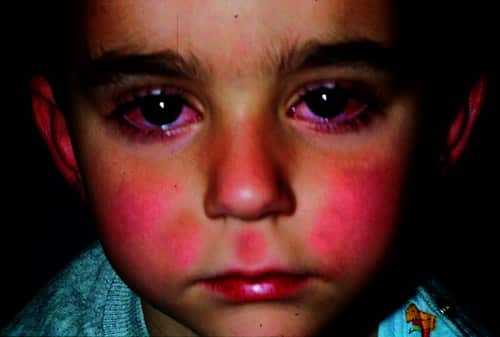What is Kawasaki Disease
Kawasaki disease is a sudden onset of inflammation. It affects the medium-sized blood vessels in the body. Mainly it affects the children of age 6 months to 4 years old. It occurs mostly when the children are around 1-year-old. It can also see in adults, but less frequently.
Young children will be severely affected than older children. In young children, major symptoms and signs (cardinal features) of Kawasaki disease can’t see.
Kawasaki disease more prevalent among Japanese ethnicity. Less common in Afro–Caribbean ethnicity. Inbetween can see in Caucasians.
What is the Cause for Kawasaki Disease
The exact cause is unknown. But considering cause is immune hyperactivity to the triggers. Triggering factors also still unknown.
What are the symptoms and clinical findings of Kawasaki disease?
- Irritable
- Mostly can see in children, and they will be easily annoyed and agitate.
- High fever
- It isn’t easy to control by antipyretics (fever-reducing drugs)
- Fever will last more than 5 days.
- Inflammation (redness, swelling, warmth, and itchiness) of the BCG vaccine site can be seen in children.
- High C- reactive protein (CRP)
- High ESR
- High White blood cell count (CRP and ESR level is increased in a blood sample when the body has ongoing infection or inflammation. WBC in blood will rise to fight with the Kawasaki disease).
- After 2 to 4 days of the disease, both eyes become red ( conjunctival congestion).
- Dryness and redness inside the mouth and lips can see after the third day of the illness (strawberry tongue).
- Lymph node enlargement in the neck with fever
- Swelling of the soles and palms after 2- 5 days.
- Rash after one week.
- Peeling of the soles, palms, and fingers in 15 days.
- Increased blood platelet count. ( it happen in the second week of the illness)
The platelet count will increase in the second week of the illness. In the first 6 weeks, Coronary arteries are affected one-third of the children with Kawasaki.
When coronary artery (blood vessels which carry oxygen and nutrients to the heart muscles) is affected, coronary artery aneurysms (dilatation) and narrowing occur. Narrowing happens due to arterial wall scar formation (healing formation from vascular injury due to vasculitis). This will lead to a reduced blood supply to the heart. It will lead to a Heart attack (myocardial ischemia) and sudden death.

Diagnosis
- Diagnosis made using clinical features. There are two methods to diagnosis
- Persistent fever with below 5 clinical features
- Rash involving body
- Nonpurulent conjunctivitis (Red eye without pus discharging)
- Red mucous membrane (red, cracked lips and strawberry color tongue)
- Cervical lymphadenopathy (enlarge lymph node around the neck area)
- Red and oedematous palm and soles or peeling of finger and toes.
- The presence of less than 4 of the above clinical features with coronary arteries aneurysm will diagnose the disease.
But two separate echocardiograms should see the coronary artery aneurysm.
- Persistent fever with below 5 clinical features
What are the complications of Kawasaki disease
- The patient can develop a giant coronary artery aneurysm. It will need life long warfarin therapy and follow up.
- Myocarditis – It is inflammation of the heart muscles. It decreases the heart pumping ability.
- Pericarditis – It is inflammation of the sac covered the heart.
- Gallop rhythm – three or four audible heart sounds can hear. Normally two heart sound is audible.
What are the Treatments for the Kawasaki disease
- Within the first 10 days, a single high dose of intravenous immunoglobulin (2g/kg) should be given.
- It decreases the risk of developing coronary artery aneurysm.
- After immunoglobulin treatment, should give a high dose of Aspirin (200mg- 300mg ) daily.
- A high dose of aspirin will give until fever, and inflammatory markers become normal.
- After that, a low dose of aspirin will continue for 6 weeks.
- If fever reappears despite the treatment, the second dose of intravenous immunoglobulin will be given.
- When platelet level increases, blood platelet aggregate. This forms blood clots in coronary arteries. To prevent it, antiplatelet aggregation drugs will be given.
- The patients with persistent fever and high inflammatory markers (increase CRP, White blood cell count, and ESR) need treatment with infliximab, steroids, or ciclosporin.
- The patient who developed coronary artery aneurysms need frequent echocardiogram and follow up. They need long term warfarin.

